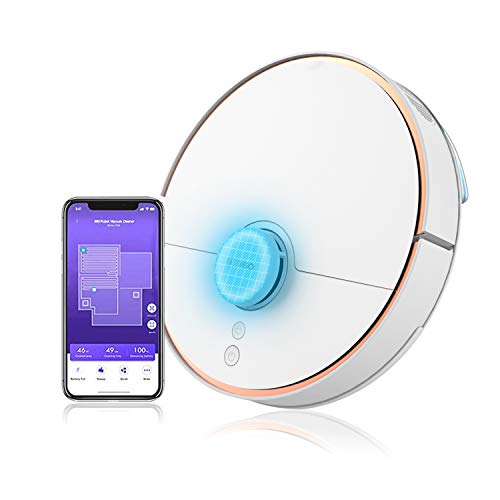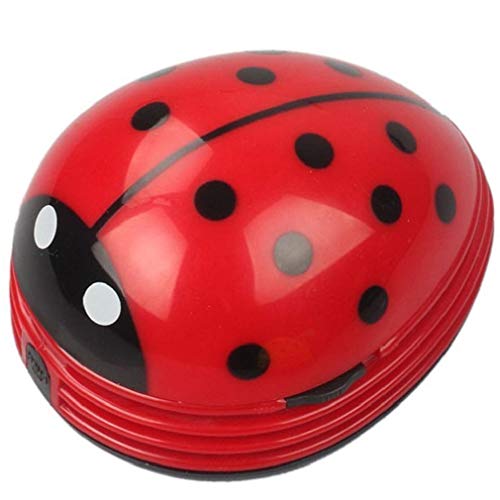11 "Faux Pas" That Are Actually Acceptable To Create With Yo…
페이지 정보

본문
 How to Take Care of a Robot Mop and Vacuum
How to Take Care of a Robot Mop and Vacuum A robot vacuum and mop can save you a lot of time cleaning. But they also require regular maintenance, like emptying the dirt bins, washing the reusable cleaning pads according to the manufacturer's instructions, or disposing of single-use ones and maintaining the sensors clean.
A robot vacuum and mop can save you a lot of time cleaning. But they also require regular maintenance, like emptying the dirt bins, washing the reusable cleaning pads according to the manufacturer's instructions, or disposing of single-use ones and maintaining the sensors clean.Find features for mapping to avoid making repetitive traverses of the same area and also app integration to set schedules, Best robot vacuum for thick carpet adjust power settings and modes and save maps of your home.
1. Clean the Dirt Bin
Regular maintenance is essential for all robot vacuums and mops. This includes emptying the dirt bins, and washing pads, as well as keeping track of the replacement consumables. The better your maintenance of these parts, the longer they'll last. Some cleaning robots also require some extra care especially those that have water tanks.
First, empty the dustbin completely after each cleaning session. This is one of the simplest tasks you can do, but it is essential for the smooth operation of your robot. It is also important to keep the filter clean regularly. Consult your user manual to determine the Best Robot Vacuum For Thick Carpet method and how often you should clean the filters.
Although the mopping feature on your robot will eliminate a lot dust, a number small particles can still accumulate in the cracks and gaps of your flooring. These include skin and hair particles like dandruff, mites dirt and pet hair. To keep these particles from causing health issues, it is important to use a vacuum cleaner or sweeping robot to clean these areas.
Additionally, if you plan to use your robot to mop it is important to choose a model that comes with top-of-the-line hardware and large dust and water tanks. LEGEE is one of the biggest dust bins and water tanks among its competitors. This means that you won't have to stop cleaning to refill the tank.
Finally, don't put any vinegar or floor cleaners in the tank of your robot mop's water unless directed by the manufacturer. Using these substances can cause damage to the robot and could cause the warranty to be voided.
A robot mop and vacuum is a great way to reduce your time so that you can concentrate on more pressing matters like your family or work. However, some stains and dirt can be too stubborn for your robot to handle. It is also crucial to regularly conduct a thorough cleaning session yourself with an ordinary vacuum cleaner to get rid of these tougher stains as well as clean areas that your robot isn't capable of reaching.
2. The Cleaning Pads
Depending on the method you use your robot mop, the pads could become dirty or stained. It is crucial to clean your cleaning pads on a regular basis. You can wash them either by hand or in the washer alongside your normal laundry. Avoid using fabric softeners or dryer sheets, as these can reduce the absorbency of the pad and cause it to stop working properly.
If your mop doubles as an air cleaner, it will need its dust bin to be emptied and cleaned on a regular basis. Hybrid models that vacuum and sweep using dry mops are also affected. Many robot mops come with brush attachments that require to be washed.
When washing the mop pads, be sure to wash them thoroughly to remove any remaining dirt and grime. You can also soak the pads in warm water to help get rid of any debris that has remained. When they're completely clean, let the pads air dry, or place them in the dryer at a low heat setting. It is recommended to wash your pads every 2 to 3 months.
During the cleaning cycle mop or vacuum cleaners can pick up small items that could cause damage to the sensors of your robot. You can prevent this by wiping the sensors with a microfiber cloth from time to time. This will allow the robot to navigate around the room without smacking against furniture or walls.
The majority of robot vacuums and mops are equipped with sensors on their base which are used to detect obstacles and ensure the machine doesn't get caught in tight spaces. You'll have regularly clean them since they can become filled with dust and other debris.
Certain robot vacuums come with a self-cleaning feature that you can use after every use. You can check the website of the manufacturer to determine whether this feature is available on your model. This cycle will typically take about two to three minutes and can be controlled via an app or a button on the robot. This cycle should be run frequently using a mop or vacuum cleaner to ensure the performance of sensors and other components.
3. Clean the Charging Station
Most robot mops spray cleaning solution directly onto the floor to soften staining and then scrub them away with scrub pads. Some robot mops come with a disposable mop pad, while others can be cleaned and reused. Whether you choose disposable or reusable mop pads, it's essential to empty them and wash them between cleaning sessions in accordance with the instructions provided by the manufacturer. You should also drain and let the docking station or mop base dry between uses to avoid mildew from developing.
As with vacuum cleaners, robot mop and vacuum/mop combos need regular maintenance to ensure they are running smoothly. This includes emptying the dust bin, washing the pads and, occasionally, cleaning the sensors. If you own a robotic mop that has dirt sensors, you may need to gently wipe it down every few times to remove dust that can hinder the sensors and cause mistakes in navigation.
Many robot mop models come with an app that allows you to save maps of your house, set up cleaning schedules and keep track of when the machine needs maintenance. If you're looking to buy a mop, ensure that it is connected to Wi-Fi. This will allow you to access the app from any location.
A highly rated model, the Samsung Powerbot Vac + Mop is equipped with smart features that let it clean floors, without needing to be present. The map function allows you to designate virtual boundaries and no-go areas for the robot. You can also use it to manually direct it to clean a specific area of the room. Its vacuuming and mopping capabilities work on both carpeting and hard floors, making it an ideal option for homes that have both.
Other smart features on this robot that is 2-in-1 include an object avoidance sensor that assists it navigate between furniture and other objects as well as a self-emptying dustbin that reduces the amount of cleanup needed after each use. It can be programmed to run when you are away, which is perfect for busy homeowners. And it's quieter than most other vacuums, which can be a plus for those who live with pets or children that are sensitive to noise.
4. Clean the Sensors
Apps are available for the majority of robot vacuums, and even some mop and vacuum combos. They allow you to set up cleaning schedules for automatic cleaning and define cleaning settings. You can also keep track of when maintenance is required. The app allows you to manually clean start, stop, and adjust the settings of your robot from any place within the home.
The app is particularly useful if your robotic cleaner has mapping capabilities, such as lasers, cameras or optical dToF, which allow it to save a virtual map of the room and move around furniture. These features can also help reduce the frequency of recurring stains on your floor, making your cleaning chores less labor-intensive.
When your best robot mop for wood floors's mapping sensors get dirty, it could have trouble finding its way around your home. Cleaning these sensors is important similar to cleaning a smartphone's screen or camera lens. This can be done using a dry clean cloth. If you use a wet cloth or cleaner, you could damage the sensors and cause malfunction.
Similarly, it's an ideal idea to clean the brushes of your robot vacuum on a regular basis. This will prevent hair tangles from developing and clogging up the motor and will make it easier for your robot to clean up debris. It's also recommended to wipe down the primary brush roll, as this is typically responsible for picking up dirt and can accumulate a lot of dust over the course of time.
And lastly, only use the cleaners recommended by the manufacturer of the robot. Other floor cleaners could damage your robot and invalidate its warranty. Most brands suggest using a mixture of water and vinegar, or a cleaning solution that is designed specifically for their robot. Never pour in hot water or use a solution containing abrasives since they can damage internal components and leave a sloppy dirt on your floors. Check out the owner's manual for more detailed instructions on how to clean your robot cleaner. This will ensure that it operates well and lasts for a longer time.
- 이전글Unanswered Questions on Online Casino That You Need To Know About 24.05.31
- 다음글10 Things You Learned In Preschool That Will Help You With Repair A Window 24.05.31
댓글목록
등록된 댓글이 없습니다.